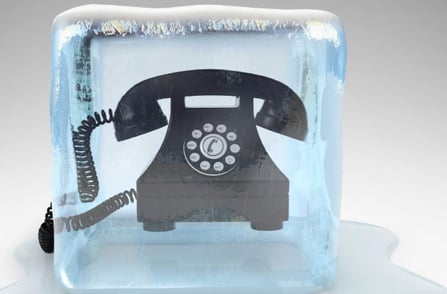
1. Email subject line
Using an exclamation mark in the subject line is a clear spam signal. It sounds as if you were shouting at the prospect and force him to take a certain action. The same applies to exclamation marks used in the cold email text itself. If, for example, you really want to wish someone “happy birthday” it’s just best to ring them up instead of using exclamation marks.
2. Email address
The email address is a generic one. My advice is to always try to find a person to address because you address the specific needs and challenges of someone. Writing to a generic cold email address will somehow force you to write in a very broad, impersonal way and lose the prospect from the very start.
3. Addressing the prospect
It’s best to always write the name of the person you’re contacting and be polite. “Hey” is a very friendly “hello”, too friendly to be addressed to a person you’ve never met before. It’s definitely not a sign of respect. Being friendly with friends is one thing, being friendly with strangers – especially high-level executives – is just weird.
4. The first sentence
Here is where you should be creating a personal connection by telling the prospect how you’ve found them and why you’re cold emailing them. In the example above, the email writer failed to create a personal connection – the beginning is very salesy and doesn’t trigger trust from the side of the receiver. There is no point of reference and no connection is built with the prospect.
Furthermore, never say “I hope you’re doing well” to a stranger. Nobody does that. You already wasted the prospect’s time with that sentence because he doesn’t know what you’re talking about.
In this email, the prospect probably feels lost completely right after the first paragraph. The person sending the cold email speaks about a solution that allows him to engage global customers in just 5 seconds. First of all, he should have introduced himself/ herself, explain why they’re reaching out, how they found the prospect, etc. The text is very salesy and focuses only on the solution, not at all on the prospect’s problems and challenges
5. Bolding text
Normally, you don’t put anything in bold but when you do, just bold only one thing so that the focus goes on that word/ phrase. In the case of this email, bolding makes the text too in your face and too salesy. Bolding several elements in an email text is a clear sign of spam.
6. Different font size
This makes the email look messy and written in a hurry. It sounds like a “how to setup” guide when in fact the sender doesn’t let the prospect set up anything now. He just wants to close the deal with a single email.
7. Listing
The sender is doing many different things (bolding, listing, etc). He/ she tries to sell the product from the first sentence, lists the benefits, and then lists the benefits again and tries to sell it again. After reading this email, the prospect expects for the call to go in the same direction – listing benefits without understanding his needs.
8. Closing paragraph
By this time, the prospect should know who you are, how you’ve found them and why you’re mailing them. In this case, the sender failed to achieve this. The text is too colloquial, it sounds impolite and too much like spoken English.
In the closing paragraph, you should also make it clear that you want a call to understand their process better so you can determine whether there’s a fit. Never ask the prospect to determine whether there’s a fit based on the info in the email. They won’t have time for this.
“Thanks in advance” – this makes the reader feel angry. It’s like forcing someone to do something for you in a manipulative way. Thanking someone in advance is like trying to make someone feel guilty if he doesn’t take the action you’d want them to. “Thanks in advance” backfires so make sure you never use this in your cold emails.

![How to avoid an email domain blacklist and remove your IP from one [in 2024]](https://hubsell.com/hs-fs/hubfs/Imported_Blog_Media/how-to-avoid-email-domain-blacklist-and-remove-ip-featured.jpg?width=520&height=294&name=how-to-avoid-email-domain-blacklist-and-remove-ip-featured.jpg)





